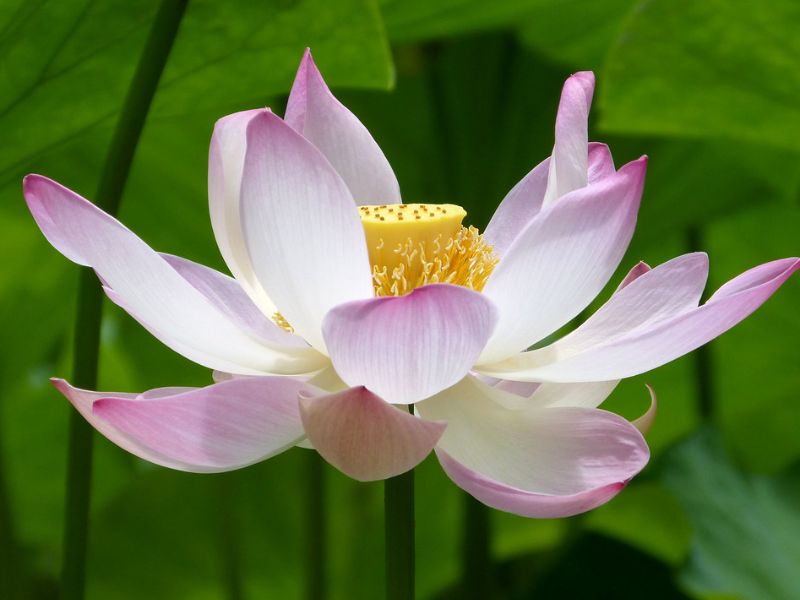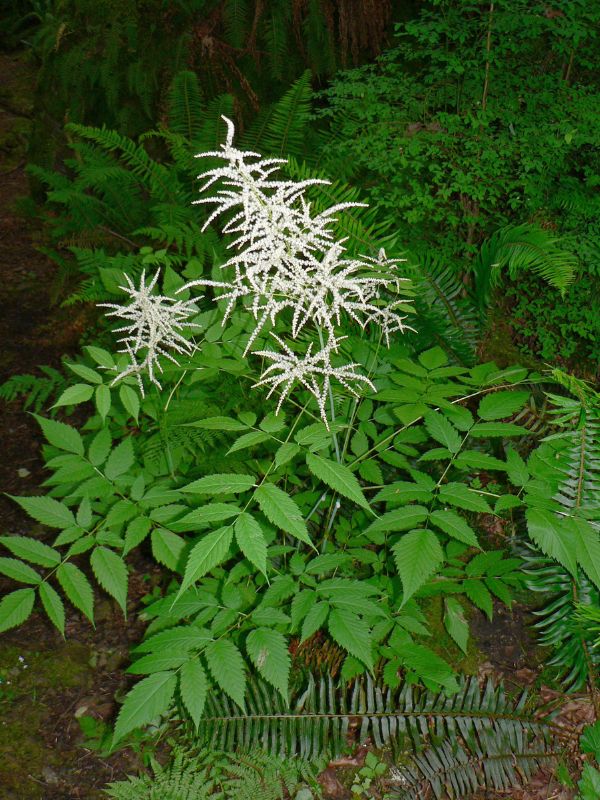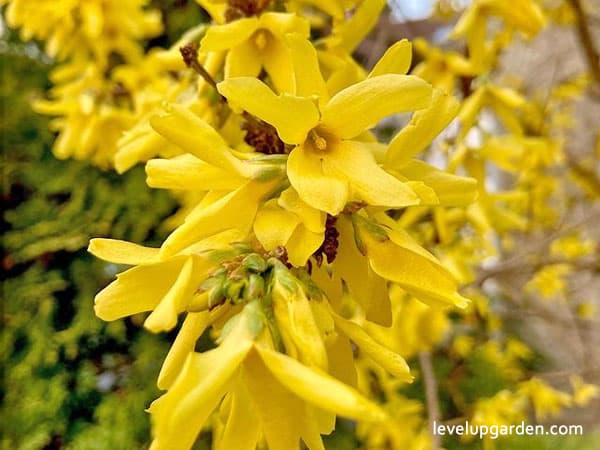Sugar Maple (Acer saccharum) is a deciduous tree of the sugar cane family that is native to eastern and central North America. It prefers to grow in rich forests, such as cove forests, especially over areas rich in magnesium, iron (mafic), and lime (calcareous). It is also common in dry forests and woodlands and, less commonly, in northern hardwood forests at higher elevations in acidic environments. Since it was brought to the Piedmont as an ornamental, it is found sporadically throughout the Piedmont.
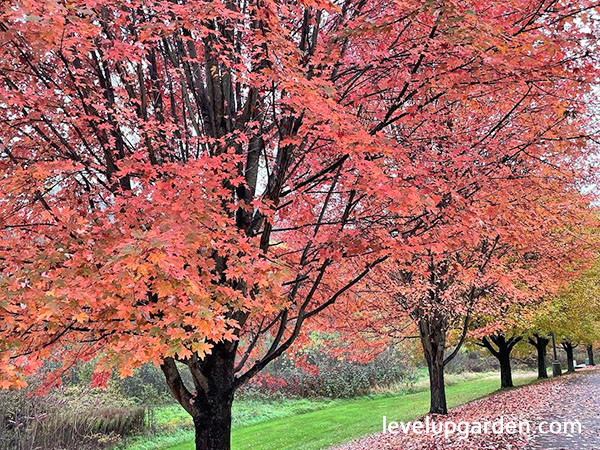
Sugar Maple is so popular in North America that it has been designated the state tree in four U.S. states and the national tree in Canada. Its appeal is easily understood. The parts of this tree have been used for centuries for sugar, dye, furniture, medicine, and soap. In the fall, the tree is dependable, with spectacular orange, red, and yellow foliage. In addition, they change to bright oranges and reds in the fall, adding great beauty to any landscape.
Northern Sugar Maple grows best in full sun, well-drained, slightly acidic, fertile soils, but can tolerate average well-drained soils in sun to shade. It does not tolerate compacted soils, high temperatures, air pollution, or road salts common in urban environments. Ideal as a shade tree in lawns and parks.
I. Plant Profile – An Overview of the Sugar Maple tree
| Common names | Sugar Maple, Hard Maple, Leucoderme, Northern Sugar Maple |
| Botanical Name | Acer saccharum |
| Plant Type | Trees |
| Plant Family | Acer – Maples |
| Exposure | Full Sun, Partial Sun |
| Water Needs | Average |
| Maintenance | Low |
| Soil Type | Chalk, Clay, Loam, Sand |
| Soil pH | Acid, Neutral |
| Soil Drainage | Moist but Well-Drained, Well-Drained |
| Mature Height | 55-75 ft. |
| Mature Width | 30-50 ft. |
| Growth Rate | Fast |
II. Sugar Maple Tree (Acer saccharum) Appearance
The canopy is densely spreading and shady, growing at a slow to moderate rate, but faster in open areas. The leaves are five lobed with coarsely toothed margins and turn bright shades of red, orange, and yellow in the fall. Its yellow inflorescences droop in spring, and winged samaras bloom in summer in clusters on long, reddish stems.
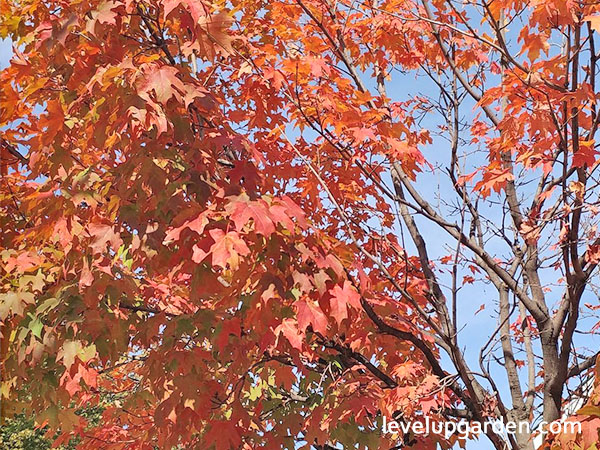
Currently, this is the only tree used commercially for making syrup. The sap is collected at the end of winter and concentrated by boiling or reverse osmosis. A liter of syrup is made from 35 to 40 liters of sap.
One tree produces 5 to 60 liters of sap per year. For best sap production, the tree must be planted in areas with nights below freezing and days above 5 degrees Celsius (41 degrees Fahrenheit).
Its leaves are 3 to 6 inches long and wide, with five lobes. The basal lobes are relatively small, while the upper lobes are large and deeply lobed. Also, they are tip pointed, base cordate, margins entire. It has a color of dark green in summer, changing to yellow, orange, and red in fall.
Sugar Maple trees have male and female flowers which are separate, greenish-yellow in color, drooping on slender stems in clusters up to 3 inches long. In North Carolina, flowering occurs from April to June. Moreover, the fruits are U-shaped, paired, samaras with papery wings averaging 1 inch long. Its color matures from green to brown.
III. Growing and Care Conditions
Sugar Maples take decades to reach maturity and will likely not make syrup until they are 30 to 40 years old. In the meantime, there is much to look forward to. If properly cared for, a Sugar Maple tree will become an heirloom that will beautify the landscape for centuries to come.
Planting
Sugar Maple is tolerant of moist soils and will grow well in any fertile soil, but prefers well-drained soil. Frequent deep irrigation during extremely dry periods, especially in areas with hot summers, will help retain more foliage.
Choose a sunny location that receives direct sunlight for 4 to 8 hours a day. Next, drill holes that are 2 to 3 times the width of the rootball and the same depth. Place the tree in the hole so that the top of the rootball is flush with the ground.
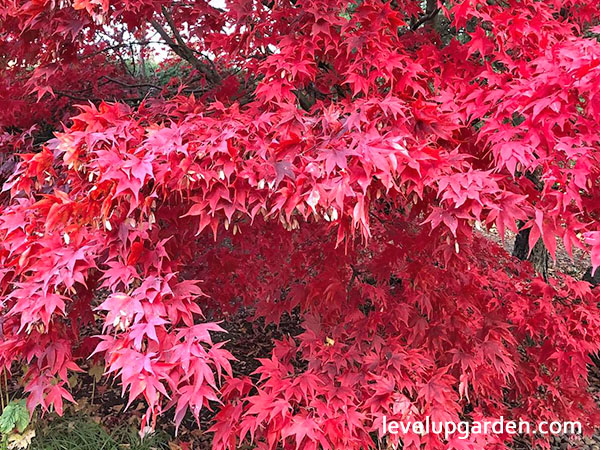
After that, fill the hole with a small amount of soil so that the tree stands upright and is well watered. Now, once the water has been absorbed by the rootball and surrounding soil, fill the planting hole with the remaining soil. Pack it in tightly and water for a second time. Finally, mulch to retain moisture and keep competing plants from growing around the planting site.
Light
Sugar Maple is best planted in a sunny location. Because Sugar Maple is often, or eventually will be, the largest specimen in the landscape, it is unlikely to remain in partial shade for long, unless in a woodland environment. However, it will tolerate semi-shade well, as long as it receives at least 4 to 6 hours of direct sunlight per day.
Watering
During the growing season, the plant needs to be watered once a week, but mature trees require sufficient watering even in the summer. If the leaves are light green, the plant needs too much water. If the leaves are drooping, the plant needs both too much and not enough water, so please water the plant correctly.
Fertilizer
During the first growing season, use only slow-release fertilizer tablets; any 10-10-10 fertilizer will do. Thus, fertilize twice a month when the Maple is going dormant and once a month during the summer months. Discontinue fertilizer before the tree returns to dormancy.
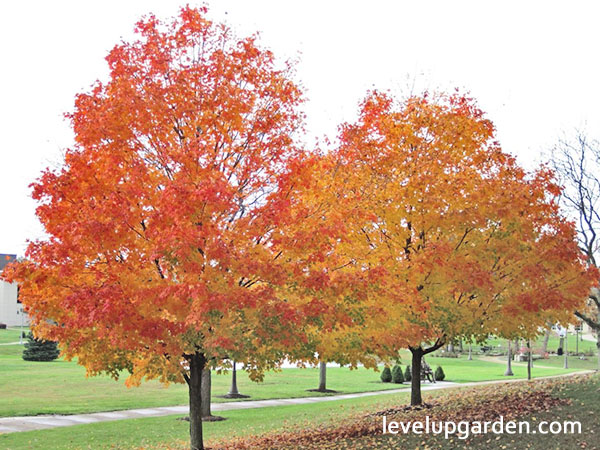
Soil Requirements
Sugar Maples thrive in a variety of soil conditions, but do best in deep, well-drained soils rich in organic matter. Since the tree will eventually grow, it is important to plant it in a location where its roots can grow freely.
Consider places like nearby sidewalks, house foundations, and driveways. Sugar Maples also grow best in slightly acidic soils with a pH of 5.5 to 6.8.
Pruning
Pruning should be done when the leaves are fully mature. The sap is reduced at this time. Remove all dead or dying branches, do this before beginning to cut live branches. Before you begin cutting, decide which branches you will cut. Look for large branches that are at a narrow angle to the main trunk, branches that rub against other branches, and branches that extend inward and intersect other branches.
Pollination
Sugar Maple trees flower in April and May. As soon as the greenish-yellow flowers bloom, bees visit the flower beds. Pollination is believed to be done by wind, not bees. The flowers nurture a pair of winged seeds that mature in early fall.
Pests and Diseases
Sugar Maple trees may come in contact with many pests and diseases throughout their long life. The most common are cosmetic diseases, which affect only the leaves of the tree and not the health of the tree itself. These include root rot, sap leak disease, tar spot disease, powdery mildew, vine cracking disease, and lichens.
In addition, other than the possibility of bud damage, there should not be many noticeable pest problems. Possible pests include aphids, gall midge, and sapsucker, most of which can be removed from the tree using a strong jet of water or treated with a horticultural oil such as neem oil.
IV. Uses
Sugar Maple Tree wood is used for a wide range of applications, including furniture, paneling, flooring, interior trim, and veneer. It is also used for gunstocks, tool handles, plywood molds, cutting blocks, woodwork, novelty products, sporting goods, bowling pins, and musical instruments. Sugar Maple accounts for about 6% of the value of hardwood lumber in the U.S. and is increasingly being produced for lumber and firewood.
The leaves, bark, and sap of this Maple tree contain biochemicals that may counter inflammation, the root of many diseases. By regulating blood sugar levels, Maple trees may help diabetes and its pre-diabetics.
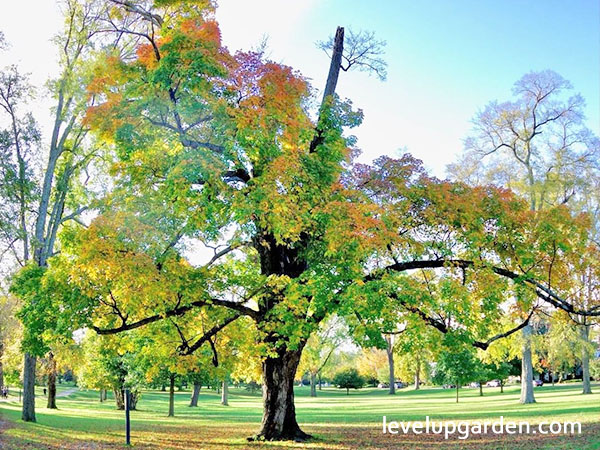
The sap contains a significant percentage of sugar. This can be used as a soft drink or the water can be boiled down to a syrup. Syrup is used as a sweetener in many foods. The sap can be harvested in late winter or early spring, but is best harvested on warm sunny days after a frost.
V. Why should you buy Sugar Maple tree (Acer saccharum)
Sugar Maple is a hardwood tree that embodies beauty, charm, and strength. Sugar Maple stands great heights and spreads its unparalleled foliage and grace. It is no wonder that New York and Vermont have adopted it as their state tree and that Canada adorns its flag with Sugar Maple leaves.
Plus, you get to see a show of color that you won’t find anywhere else. The fall foliage stands out from all other trees. The green leaves turn to rich golds, bright yellows, and glowing oranges. Finally, they turn an incomparably deep red that will have you looking forward to next fall.
Like a brilliant sunset, Sugar Maple (Acer saccharum) ignites the fall landscape with its distinctive red, orange, and yellow foliage. After the leaves fall, the gray bark of the Sugar Maple provides a contrast to the other brown-barked trees in winter.
In early spring, the sap is collected, making it one of the best Maple trees for making Maple syrup. It is also an excellent shade tree in the summer and demonstrates its value throughout the year. It is truly a seasonal gem.
VI. FAQs
Where does Sugar Maple grow best?
It grows in sand, loamy sand, sandy loam, loam, and silt loam, but grows best in well-drained loam soil. It does not grow well in dry, shallow soils and is rarely found in wetlands.
Are Sugar Maples good trees?
Sugar Maples can tolerate moist soil, drought, and some shade. Therefore, if you have a large yard and questionable soil, Sugar Maples are a good tree to plant. It also has excellent cold tolerance.
Are Sugar Maples troublesome trees?
Sugar Maples are deciduous trees, so they drop both leaves and fruit. All of its leaves fall off in the fall, and its feathered seeds fall off in the fall. This may make it seem like a messy tree in the landscape, but most deciduous trees are.
How fast does Sugar Maple grow?
The growth rate is slow to moderate, ranging from less than 12 inches to about 24 inches per year.
How far away from the house should I plant Sugar Maples?
Sugar Maples can be planted 30 feet from the house. It will be taller than Red Maples, and the minimum height is usually the maximum height of a Red Maple, and a mature Sugar Maple can be 75 feet tall.
